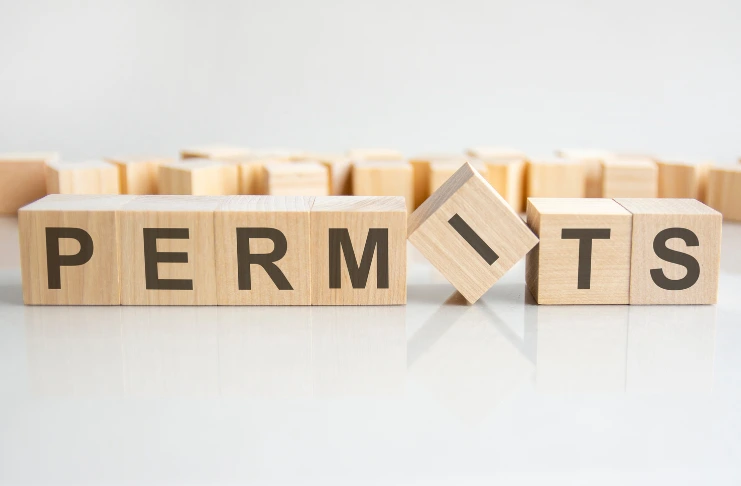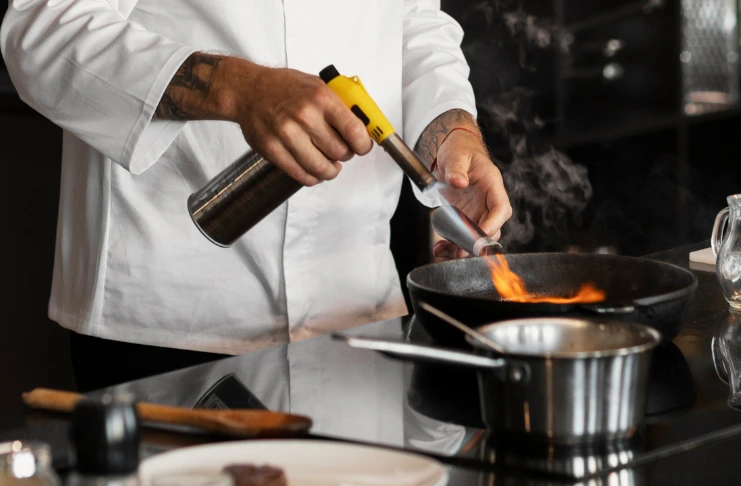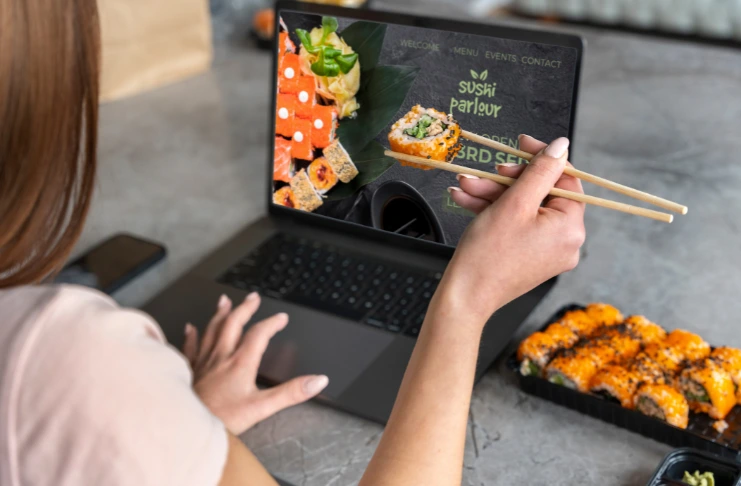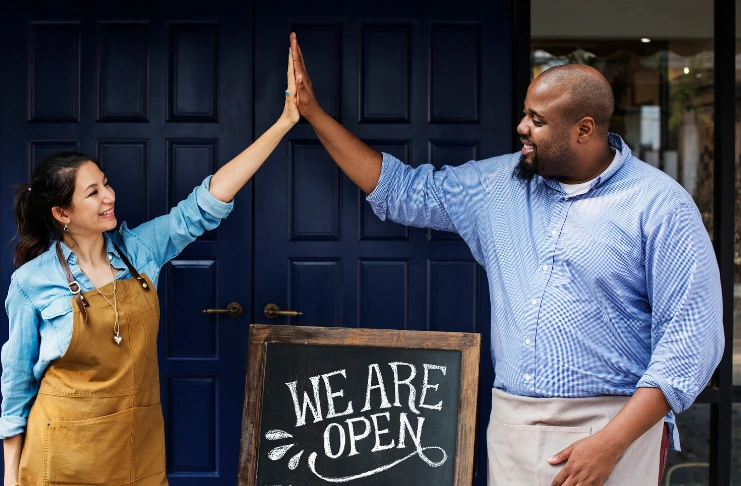Opening a new business, such as a restaurant, is more than just a business venture—it’s the art of storytelling through flavors, ambiance, and service. Picture yourself standing in an empty space, envisioning bustling tables, the clinking of glasses, and the hum of conversations. The aroma of dishes fills the air, and guests come in and go out. But before this dream becomes a reality, there’s a blueprint that every restaurateur must follow.
Whether you’re a seasoned industry veteran expanding your empire or a first-time owner embarking on an ambitious culinary quest, a detailed restaurant opening checklist is your secret ingredient to success.
This guide takes you behind the scenes, ensuring every detail—big or small—is meticulously planned, from the first concept sketch to the moment your doors swing open, welcoming a future filled with unforgettable dining experiences.
How to Open a New Restaurant: Restaurant Opening Checklist
The preparation that goes into creating a successful dining establishment requires careful thought and consideration across various aspects of restaurant costs and business.
From understanding your market to preparing your staff, each step of the process contributes to laying a strong foundation for the restaurant’s future success. Let’s break down these essential pre-opening steps in detail.
1. Conduct Market Research

Before you even think about menu items or interior design, you must first understand the market you’re entering. Market research serves as the backbone of your business strategy, helping you identify gaps, target audiences, and what your competitors are offering.
- Identify Target Demographics and Competitors: Knowing who your target customers are is crucial. For instance, are you catering to families, young professionals, or health-conscious individuals? Your restaurant’s concept, menu, and pricing will all depend on your understanding of the demographic you’re serving. Study the local dining preferences by conducting surveys, attending local events, and analyzing consumer behavior data.
- Analyze Industry Trends: Restaurants must stay on top of current industry trends to remain relevant. From the growing interest in sustainable dining to the rise of plant-based options, trends shape customer expectations. By monitoring reports from the National Restaurant Association (NRA) or other industry bodies, you can pinpoint what is becoming popular and decide if it aligns with your concept.
- Study Market Gaps: It’s essential to understand where your restaurant can fill a need that others are not addressing. Whether that’s offering a unique type of cuisine or providing a different dining experience, these gaps represent opportunities for differentiation. Perhaps there is a lack of fine dining in your area, or maybe there’s a demand for fast-casual eateries with a focus on local ingredients.
- Use Reliable Data Sources: Leverage reliable market data and industry reports. The NRA and other business-focused platforms provide extensive research on consumer trends, dining preferences, and financial benchmarks. This data will guide your decisions regarding pricing, menu design, and service style.
The purpose of this research is not just to help you understand the market but to ensure that your restaurant’s concept stands out in a competitive landscape.
2. Create a Detailed Business Plan

A comprehensive business plan acts as a blueprint for your restaurant’s future. It ensures you’re well-prepared for both the challenges and opportunities that will come your way.
- Define Your Restaurant Concept: Establish what makes your restaurant unique, whether it’s the cuisine, ambiance, service, or philosophy. Are you offering casual street food, fine dining, or something in between? Defining your concept early on will give your restaurant a clear direction and identity.
- Outline Financial Projections: Detail your startup costs, operational expenses, and revenue forecasts. A realistic budget is critical in helping you secure funding. Make sure you account for everything, from lease and equipment costs to marketing expenses and initial inventory. If possible, have an expert accountant help you project these figures accurately.
- Identify Multiple Revenue Streams: A successful restaurant has multiple streams of revenue. In addition to dine-in services, consider takeout, delivery, catering, and hosting private events. Having these additional income sources ensures your restaurant can weather fluctuations in demand and keep cash flow steady.
- Detail Marketing Strategies and Staffing Needs: A marketing plan helps you define how you will reach potential customers before and after your grand opening. Also, outline staffing requirements. Identify key management roles and the type of employees you need for both front- and back-of-house operations.
Having a solid business plan in place can also assist in securing investments or loans, as it demonstrates that you’ve thoroughly considered every aspect of the restaurant’s operations and future potential.
INDUSTRY INSIGHTS
| The restaurant industry is both competitive and fast-evolving. Understanding key insights and trends can help set your business up for success. According to the National Restaurant Association, the U.S. restaurant industry is expected to generate over $1.5T in sales in 2025. |
3. Choose a Prime Location

The location of your restaurant is often the deciding factor in its success. Without foot traffic, easy access, and visibility, even the best menu will struggle. Here’s how to evaluate potential spots:
- Consider Foot Traffic and Parking Availability: For a high-volume, casual eatery, being in a busy area with high foot traffic is key. However, for fine dining or specialty restaurants, customers might prioritize parking availability over walking distance. Ensure that your restaurant is located where your target audience frequents.
- Evaluate Lease Agreements: Signing a lease is one of the largest financial commitments you’ll make. Pay close attention to rental costs, lease duration, and the terms of rent increases. Make sure you’re clear about maintenance responsibilities and utility payments, as these can eat into your profits.
- Zoning Laws and Compliance: Check that your desired location complies with local zoning laws. Certain areas might have restrictions on food service or liquor sales. You’ll also need to check if the property is suitable for the type of restaurant you envision in terms of space, infrastructure, and safety regulations.
Choosing the right restaurant location is a blend of practicality and strategy, and it’s an investment that will impact your restaurant’s long-term success.
4. Secure Funding and Budgeting

Around 60% of new restaurants fail within their first year, and 80% don’t make it past five years due to financial mismanagement, poor location choices, and ineffective marketing.
Proper funding is the lifeblood of your restaurant. Opening a restaurant requires substantial capital investment, along with all necessary licenses and permits, so having a well-prepared financial plan is essential.
- Calculate Startup Costs: Create a list of all anticipated startup expenses. This includes costs for the lease, equipment, renovations, permits, initial inventory, and marketing. Allocating extra funds in your budget will help you be prepared for unforeseen costs.
- Explore Funding Options: There are several ways to secure funding for your restaurant. You can look into small business loans, venture capital, crowdfunding, or personal savings. Each option has its pros and cons, and you must decide which is best suited to your situation. For instance, venture capital may come with significant input from investors, while personal savings keep you in full control.
- Allocate a Contingency Budget: It’s always wise to have a contingency plan. Unexpected expenses, from a delay in construction to inventory shortages, can arise. Having a financial cushion can prevent you from running into cash flow issues during the critical first few months.
Smart financial planning and strategic budgeting set the foundation for long-term success and sustainability in the restaurant industry.
5. Register Your Business

Starting your business on the right legal footing is essential. Depending on your goals, you can choose from several business structures such as LLCs, S-Corporations, or Sole Proprietorships. Each has different implications for taxes, liability, and funding.
- Choosing a Business Structure: Your business structure should align with your goals. For example, LLCs offer personal asset protection, while sole proprietorships are simpler to manage but come with more personal risk. Consult with a lawyer or accountant to select the best option for your restaurant.
- Register with the IRS: Once your structure is in place, obtain an Employer Identification Number (EIN) from the IRS. This will be necessary for tax purposes and for hiring employees.
- Compliance with Tax Obligations: Stay current with both state and federal tax requirements. Make sure you understand your obligations for sales tax, employee payroll, and other local taxes to avoid future penalties.
Starting your culinary journey requires careful planning beyond just perfecting recipes—with the right legal foundation in place, you can focus on creating memorable dining experiences while protecting your dreams.
6. Obtain Necessary Permits and Licenses

Operating a restaurant requires a host of specific permits and licenses that vary by location and concept.
- Health Department Permits: Ensure you meet food safety standards by obtaining permits from the health department. This will involve passing food safety inspections and meeting cleanliness standards.
- Food Service and Liquor Licenses: If you plan to serve alcohol, apply for the necessary liquor licenses well in advance. These licenses can take time to process, and the requirements vary greatly depending on location.
- Fire Safety and Building Permits: Before opening your doors, ensure that your restaurant passes fire safety inspections. Depending on your location, you may need building permits to ensure your restaurant meets local codes.
Obtaining all necessary licenses will protect you from fines and ensure you’re legally compliant when you open for business.
7. Adhere to Food Safety Regulations

Maintaining food safety compliance ensures customer health and avoids regulatory penalties.
- Implement strict food handling procedures based on FDA guidelines and best practices.
- Train staff on HACCP (Hazard Analysis Critical Control Point) standards to prevent contamination.
- Schedule routine health inspections to maintain compliance and uphold hygiene standards. Strong food safety protocols build customer trust and reduce liability risks.
Prioritizing food safety not only ensures compliance but also strengthens customer confidence and enhances your restaurant’s reputation.
8. Design an Efficient Layout

The layout of your restaurant’s dining room is more than just a physical arrangement; it’s a vital component of the dining experience. A well-designed space helps improve staff efficiency while ensuring customers are comfortable and engaged.
- Balance Kitchen Space and Dining Area: Efficient kitchens are key to quick service and food quality, so ensure your layout supports a smooth flow between the kitchen and dining areas.
- Ergonomic Design: Make sure that staff can move easily without congestion, especially during peak hours. Design elements should enhance their efficiency while keeping the guest experience in mind.
- Accessibility: Ensure that your space accommodates customers with disabilities, including wheelchair-accessible tables and bathrooms.
By optimizing your restaurant’s layout, you can ensure smooth operations, a pleasant atmosphere, and satisfied customers. A strategic layout has the power to elevate both staff productivity and the overall dining experience.
9. Source Equipment and Suppliers

To deliver consistent quality and meet customer expectations, sourcing the right equipment and suppliers is non-negotiable. The right partnerships will ensure you have everything you need to run a seamless operation.
- Quality Kitchen Equipment: Choose equipment that aligns with your menu and volume demands. High-quality tools reduce breakdowns and ensure food consistency.
- Trusted Suppliers: Work with reliable vendors who can provide fresh ingredients and beverages at competitive prices.
- Comparing Prices and Contracts: Don’t settle for the first offer—shop around to find the best deals that support your restaurant’s needs and budget.
Investing in quality equipment and building strong relationships with suppliers sets the foundation for operational excellence. This approach ensures smooth day-to-day operations, reducing delays and maintaining the consistency your customers expect.
10. Hire and Train Staff

The success of your restaurant heavily relies on your team. Hiring the right individuals and providing continuous training ensures that your restaurant runs efficiently while delivering exceptional service to your guests. Returning customers spend 67% more over time than first-time customers. Hence a good service is necessary to increase customer retention.
- Hiring Skilled Personnel: Select staff that align with your restaurant’s culture and service standards. Skilled chefs, servers, and support staff are the backbone of any restaurant.
- Structured Onboarding and Training: Offer comprehensive training that covers not just technical skills but also customer service and teamwork.
- Ongoing Staff Development: Provide opportunities for skill development and growth within the restaurant. This not only boosts morale but also contributes to better customer service.
A well-trained staff makes all the difference in delivering exceptional service and creating a positive customer experience. Investing in your team is an investment in your restaurant’s success.
11. Implement an Employee Management System

Managing your team effectively ensures that your restaurant runs smoothly and your staff remains engaged. A structured employee management system allows you to handle scheduling, payroll, and performance tracking with ease.
- Optimize Labor Costs: Use scheduling software to create efficient shifts that minimize overstaffing while meeting customer demands.
- Clear Expectations: Set clear job responsibilities, shift expectations, and performance goals to ensure everyone is on the same page.
- Track Performance and Compliance: Keep organized records for payroll, tax compliance, and performance reviews, ensuring both legal compliance and employee accountability.
An effective employee management system is essential for smooth operations, improved morale, and a productive work environment. Streamlined processes allow you to focus on what matters most: delivering great food and service.
12. Develop a Strong Branding Strategy

Branding, as part of your business model, is more than just your logo or name—it’s the story you tell about your restaurant. A strong, consistent brand identity helps differentiate your business and fosters loyalty from your customers.
- Unique Visual Identity: Design a memorable logo and choose colors that reflect your restaurant’s ambiance and concept.
- Consistency Across Platforms: Ensure your branding is uniform on all touchpoints—from menus to social media to your physical space.
- Craft Your Brand Story: Develop a narrative that resonates with your target market, making it easier for customers to connect with your restaurant on an emotional level.
A well-executed branding strategy is essential for creating a loyal customer base and establishing a strong presence in the market. Strong branding helps your restaurant stand out in a crowded industry.
13. Leverage Social Media and Online Marketing

In today’s digital world, having an active online presence is crucial for restaurant success. Social media and online marketing can help you build buzz, attract new customers, and engage with your community.
- Social Media Profiles: Set up and regularly update your profiles on Instagram, Facebook, and other platforms to maintain visibility.
- Engaging Content: Share content that resonates with your audience, from behind-the-scenes glimpses to promotional offers and new menu items.
- Online Advertising and Influencers: Leverage ads and partnerships with local influencers to increase your restaurant’s reach and drive traffic.
A strategic online marketing plan is a powerful tool for reaching new customers and keeping existing ones engaged. By harnessing the power of social media, you can build a loyal following and drive sales.
14. Build a Restaurant Website

According to a survey, 62% of people said a website has impacted their decision to order delivery or takeout from a restaurant. Your restaurant’s website is often the first point of contact for potential customers. It needs to offer a seamless, user-friendly experience that reflects your restaurant’s personality and provides all the essential details.
- Mobile-Friendly Design: A large percentage of users search for restaurants on their mobile devices, so make sure your website is optimized for mobile.
- Comprehensive Information: Provide key details such as menu, location, hours, and an option for online reservations.
- SEO Optimization: Optimize your site for local SEO so that people searching for restaurants near them will find your business first.
A professional, easy-to-navigate website builds credibility and serves as a vital marketing tool for attracting new guests. It ensures customers can quickly find what they need and easily engage with your brand.
15. Offer Promotions and Soft Openings

Before your grand opening, hosting a soft opening or offering promotions can help refine your processes, attract early customers, and generate excitement for your full launch.
- Invite-only soft Launch: Hosting an exclusive soft launch allows you to gather feedback from a smaller group before your official opening.
- Promotions and Discounts: Special offers can attract customers to try your restaurant and provide early momentum.
- Use Feedback to Improve: Gather valuable insights from the soft opening to fine-tune your menu, service, and overall operations.
A successful soft opening or promotional campaign sets the stage for a successful grand opening. It ensures your restaurant is ready to serve customers and creates anticipation for the official launch.
16. Execute a Successful Grand Opening

A well-executed grand opening can create a buzz and draw in the first wave of customers. It’s a chance to showcase what your restaurant offers and set the tone for the rest of your business journey.
- Promotion and Press Coverage: Use local media, influencers, and social media to spread the word about your grand opening.
- Exclusive Deals or Entertainment: Offer something special, like a discount or live entertainment, to make the event memorable.
- Capture the Moment: Document the event with photos and videos to share on social media and maintain the buzz after the opening.
Your grand opening is your first opportunity to make a lasting impression. By executing a well-planned event, you’ll establish a loyal customer base and set your restaurant on the path to long-term success.
17. Monitor Performance and Adjust Strategies

The work doesn’t end once you’ve opened your restaurant. Ongoing evaluation of performance is crucial to keeping your operations running smoothly and ensuring your restaurant remains competitive.
- Analyze Sales Data and Feedback: Regularly track sales and gather feedback to identify areas for improvement.
- Identify Areas for Improvement: Use performance data to refine your menu, service, and customer experience.
- Adapt to Market Trends: Stay flexible and open to adjusting your strategies based on customer preferences and industry trends.
Consistently monitoring performance allows you to stay ahead of challenges and ensure your restaurant remains a competitive force in the market. Regular adjustments are key to long-term growth and success.
Conclusion
Opening a restaurant isn’t just about launching a business—it’s about crafting an experience, building a brand, and creating a community. From securing funding to designing an unforgettable ambiance, every detail plays a role in shaping your restaurant’s future.
By following this restaurant opening checklist, you’ll lay the groundwork for a thriving establishment. So, as you step into this dynamic world, remember- great restaurants aren’t just opened—they’re built, refined, and cherished over time. Here’s to your next culinary adventure!
Frequently Asked Questions
1. What is the most important thing required to open a restaurant?
The most important thing is a well-thought-out business plan that outlines your concept, market research, financial projections, and operational strategies. This serves as a roadmap to guide the restaurant toward success.
2. What permits do I need to open a restaurant in Texas?
In Texas, you’ll need permits such as a Food Establishment Permit, Sales Tax Permit, Liquor License (if serving alcohol), and Health Department Approval. You must also comply with fire safety and building permits.
3. How profitable is running a restaurant?
The average restaurant profit margin ranges from 3% to 6%, though it can vary widely depending on location, concept, and operational efficiency. Profitability relies heavily on controlling costs and driving customer traffic.
4. What is the first step in opening a restaurant?
The first step is creating a comprehensive business plan that includes financial projections, location analysis, target audience, and operational plans. This plan guides every phase of the restaurant’s development.
5. What are the 7 steps of service in a restaurant?
The seven steps of service typically include greeting, seating, presenting the menu, taking orders, delivering food, checking back, and providing the bill. These steps ensure a smooth and efficient dining experience for customers.
6. How much money do you need to start a restaurant?
Starting a restaurant typically requires between $100,000 and $500,000, depending on the type, location, and size. Costs include rent, equipment, permits, inventory, and staffing.





